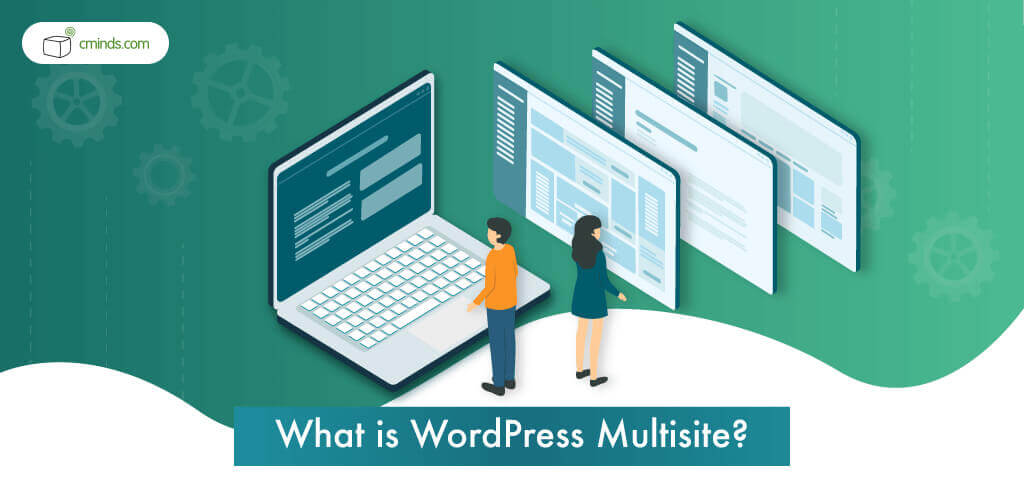The WordPress multisite feature is a game-changer for those seeking to manage multiple websites seamlessly and efficiently. With this powerful tool, users can run a network of websites from a single WordPress installation, simplifying the complexities of handling multiple setups. Whether you need a network of blogs, a multi-language platform, or a membership-based community, WordPress multisite caters to a wide array of applications. This feature enables businesses, educational institutions, and organizations to centralize their web presence while still providing unique and customized experiences to their audiences.

WordPress multisite allows users to create a network of websites and have everything accessible from one WordPress dashboard, instead of having to log into a bunch of different WordPress websites. It allows users to have several websites residing on the same server, all sharing the same themes and plugins. This is a cost-effective and user-friendly solution to managing multiple WordPress websites at the same time.
It’s important to point out that WordPress multisite works only when all the websites you want to include reside on the same network. This allows all the websites to share resources like IP address, and subdomain or subdirectory of the main network website.
December 2024 Offer – For a Limited Time Only:
Get WordPress MicroPayments Platform Plugin for 20% off! Don’t miss out!
WordPress multisite also allows WordPress management tools to be used on multiple WordPress websites from the same dashboard. These tools include security, management and performance tracking. Admin can easily create custom domains and manage the web server through hosting.
Multisite is actually a WordPress feature which was first introduced with the launch of WordPress version 3.0 and was part of the WordPress Multiuser project. The project Is no longer around, as WordPress multisite has been integrated into the WordPress core.
Why Use WordPress Multisite?
![Why Use WordPress Multisite? - [WP101] What is WordPress Multisite](https://www.cminds.com/wp-content/uploads/WP_Why_Use_WordPress_Multisite_Illustrative_Banner-1024x300.jpg)
With WordPress multisite, it becomes much easier to manage several websites which use the same theme and plugins, especially when the admin dashboard is centrally located. Because all the websites in the multisite network share the same plugins, themes and files, the ability to update the websites becomes much simpler and needs to make much less frequently.
When you use WordPress multisite, instead of being an admin, you suddenly become the Super Admin. This title allows users to ability to access the primary WordPress website as well as all the other websites in the network. Also, the network admin area where all the WordPress websites are managed in one place.
How To Enable WordPress Multisite
There are a few simple steps to enable WordPress multisite, although it is best used by users with a more advanced knowledge of WordPress. These steps include everything from installing WordPress to backing up your data and content to installing multisite and configuring it on your WordPress website.
/* Multisite */
Define( ‘WP_ALLOW_MULTISITE’, true );
define( ‘MULTISITE’ , true);
define( ‘SUBDOMAIN_INSTALL’ , true);
define( ‘DOMAIN_CURRENT_SITE’ , ‘ (Add Current site)
define( ‘PATH_CURRENT_SITE’ , ‘/’);
define( ‘SITE_ID_CURRENT_SITE’ , 1);
define( ‘BLOG_ID_CURRENT_SITE’ , 1);
Save all your changes and close the file. You can also reactivate your plugins and begin using your multisite.
Who Should Use WordPress Multisite?
![Who Should Use WordPress Multisite? - [WP101] What is WordPress Multisite](https://www.cminds.com/wp-content/uploads/WP_Perform_a_Website_Audit_Illustrative_Banner-1024x300.jpg)
Anyone can use the WordPress multisite, although its unique features are tailored to a specific area of WordPress users. The key is just how many websites needed to be managed, how to streamline the update process, cut costs for hosting and much more.
CreativeMinds Plugins With MultiSite Support
MicroPayments plugin for WordPress by CreativeMinds has specific multisite support.
It allows your users to share their digital wallets across different sites.
The MicroPayments plugin offers a smooth, user-friendly experience, allowing website owners, content creators, and online businesses to monetize their content in a pay-per-use manner. This powerful feature opens up new possibilities for revenue diversification and enhances the overall user experience by providing easy access to premium content and services.
See how it works here: CM MicroPayments (CMMP) – MultiSite Installation.
Conclusion
WordPress multisite is a unique and very helpful feature for WordPress users. WordPress multisite is also a good way for websites to be more user-friendly, cost effective and simpler to update.
WordPress multisite is simple to install and use, from a one click install through a web host to using FTP client to adjust code and from backing up information to reactivating plugins after a full multisite install process.
WordPress multisite can handle dozens, hundreds, and thousands of WordPress websites at the same time, which makes it an ideal choice for people that are managing multiple WordPress websites and it is already integrated into the WordPress core to make updating and managing much easier.


